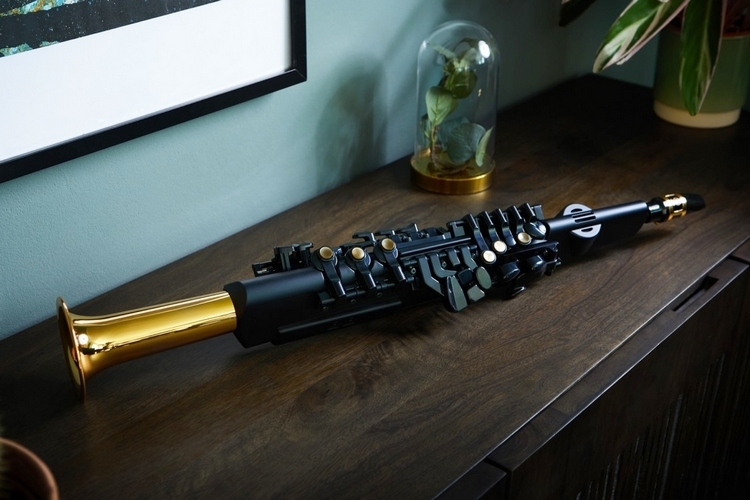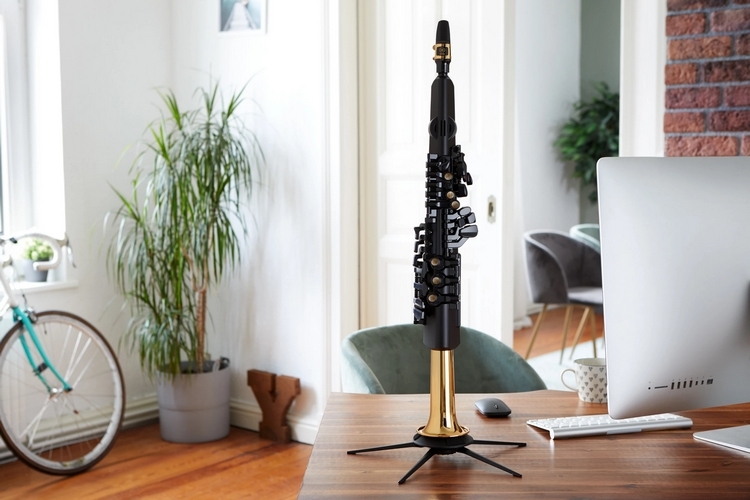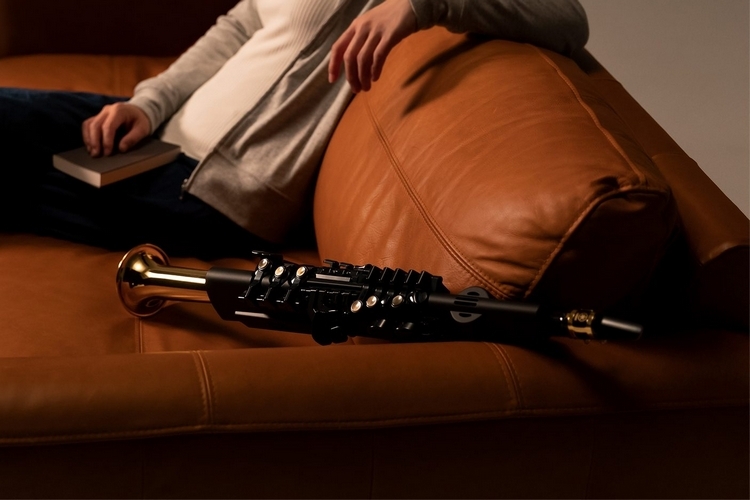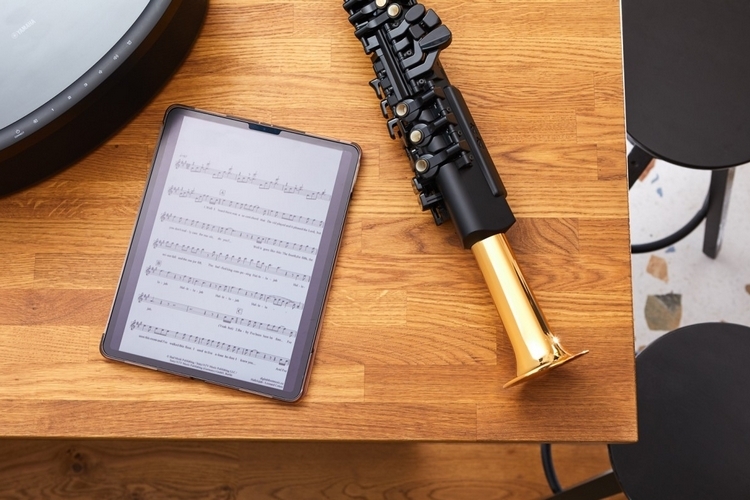
You know how electric drum pads make for a better practice instrument because you can turn their volume way down or even plug in headphones, allowing you to play all night without bothering the neighbors? Yeah, they’re great. It’s the same thing, in fact, that makes many digital-based instruments great, as they let you make music without the ruckus that very few neighbors, if any, are likely to appreciate. The Yamaha YDS-150 Digital Saxophone provides the same convenience for the saxophone-playing crowd.
No, it’s not the first digital wind instrument ever made. It is, however, the first one designed to not just sound like a real saxophone, but play like it, too, with its form, key layout, and tactile feel resembling those on an acoustic sax, making it an ideal practice tool as much as it is a functional standalone instrument.

The Yamaha YDS-150 Digital Saxophone recreates the look and feel of an acoustic saxophone without the extended bell bow and the long neck, so it’s a lot smaller than the traditional version of the instrument, measuring just 27.5 x 4.3 x 4.1 inches (height x width x depth). This should make it easier to transport, as it comes in a size that can fit in many backpacks (albeit, with part of it probably sticking out), allowing you to easily bring it to a studio, a live venue, or wherever else you want to summon your inner John Coltrane.
It uses a mouthpiece, key layout, and even a brass bell all taken straight out of Yamaha’s own lineup of acoustic saxophones, so experienced players can feel very comfortable taking their skills to it, all while allowing novices to be able to transition to an acoustic sax without it feeling totally alien. Unlike an acoustic sax, though, this is all-digital, so you can use the companion to change the fingering and customize it to your preferred style, allowing you to tailor the instrument to play to your personal strengths.

The Yamaha YDS-150 Digital Saxophone uses a sensor to detect your breathing into the mouthpiece, which triggers it to digitally create sound waves that drive the speaker and causes the brass bell to resonate and provide realistic feedback similar to a regular sax. It uses breath pressure and articulation, along with how you press the keys, to decide which sounds to generate, although the digital nature means you can tone down the breath sensor readings, such that it will deliver a consistent sound, regardless of how you blow into the mouthpiece. Basically, it removes the precision breathing normal sax playing requires, allowing you to concentrate on fingering any time you play.

It doesn’t play as loud as a regular sax, maxing out at just 60 decibels, with 15 volume settings for playing as quietly or as loudly as you like. You can set it to play any of 73 instrument sounds, including all four sax types in 56 different presets. Other features include 20 user-programmable presets, an AUX-In slot for connecting other devices (e.g. when you want to jam to some track on your phone), and a carrying case with shoulder strap for convenient transport.
The Yamaha YDS-150 Digital Saxophone comes out in November, priced at $1,078.
